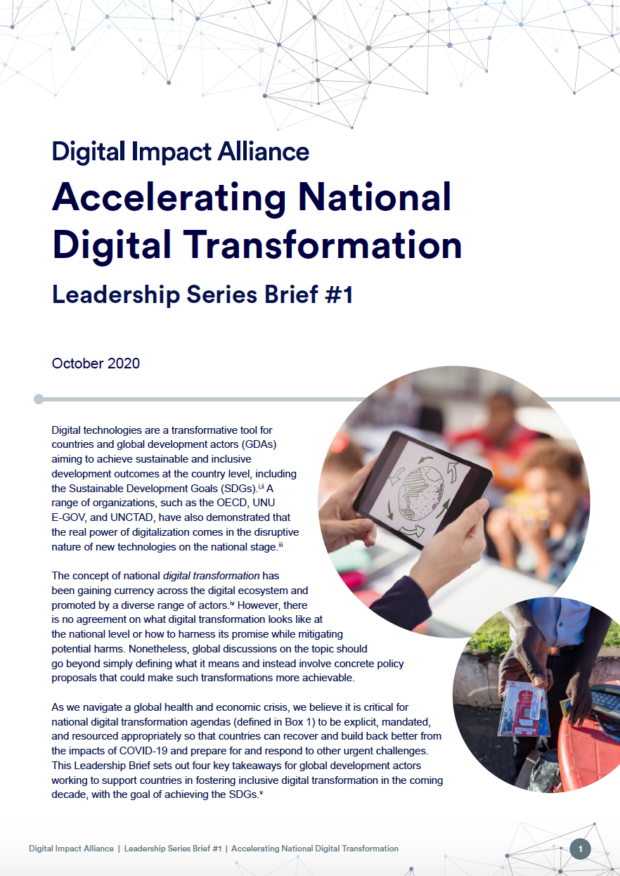For the third in our series of Leadership Briefs, we share some learnings from two years of work on public procurement of digital technology, drawing on DIAL’s Benchmarking Study and Category Guide for Procurement of Digital Technology to synthesize key takeaways for public procurers, government chief information officers, and stakeholders to consider.
Key Takeaways:
- Public procurement can accelerate a country’s digital transformation. Governments should leverage their substantial spend volume to foster streamlined and efficient acquisition of digital technology across government institutions and drive the local digital market and ecosystem of vendors towards national digital transformation objectives.
- A whole-of-government approach fosters standards and improves value for money. Harmonizing the procurement of digital technology across government is still a challenge in many countries, irrespective of income levels. Research conducted in partnership with Smart Africa revealed that coordinating national ICT strategies across government branches, including procurement, was a challenge affecting implementation of their national digital transformation agendas.
- Public procurement of digital technology requires rethinking traditional procurement processes and laws. Prescriptive public procurement processes are usually put in place to minimize risk, and rightly so. Anticipating future contingencies can help acquire certain products and services whose evolution and risks are relatively well-known over time. Still, they do not work when applied to modern digital technology with evolving specifications and end-user needs.
- Public procurement of digital technology requires investment in specialized technical skills and holistic approaches. Having the necessary technical skills in government is key to designing and implementing digital technology contracts effectively and managing the complexities of desired technology specifications and the impact on organizational structure.



